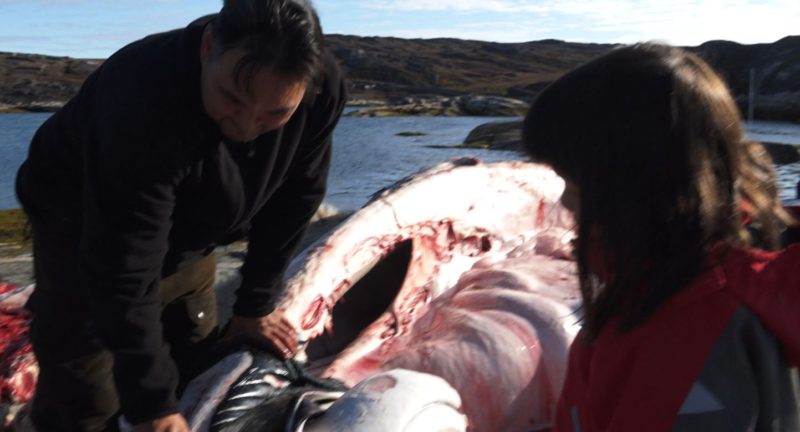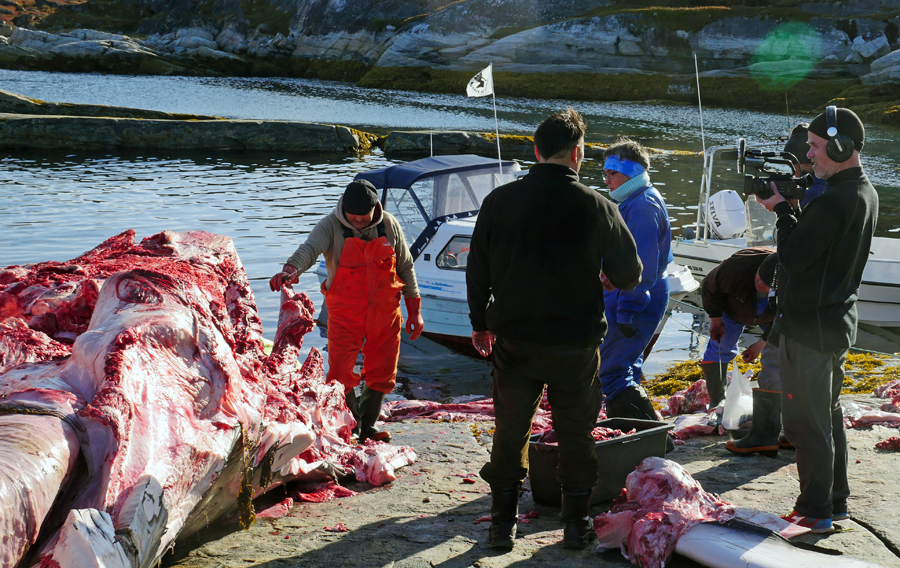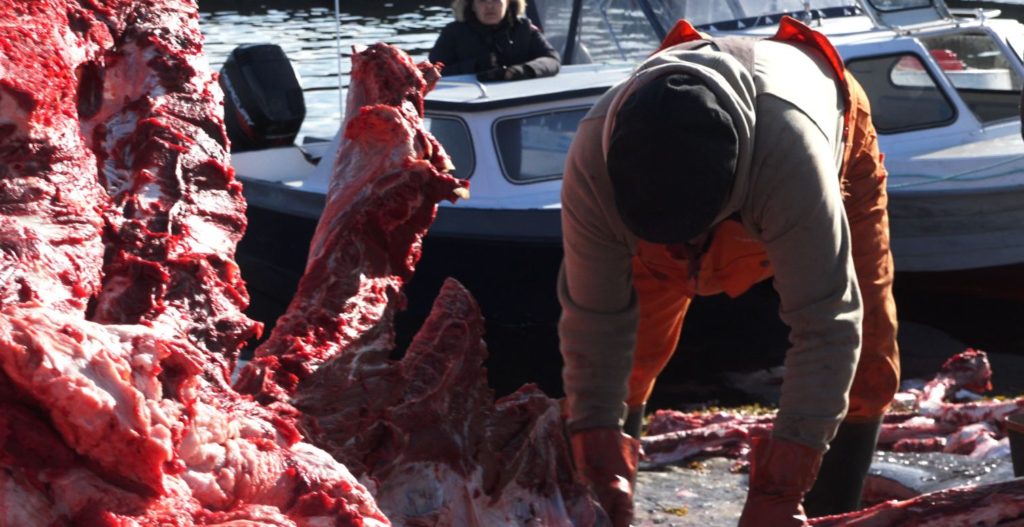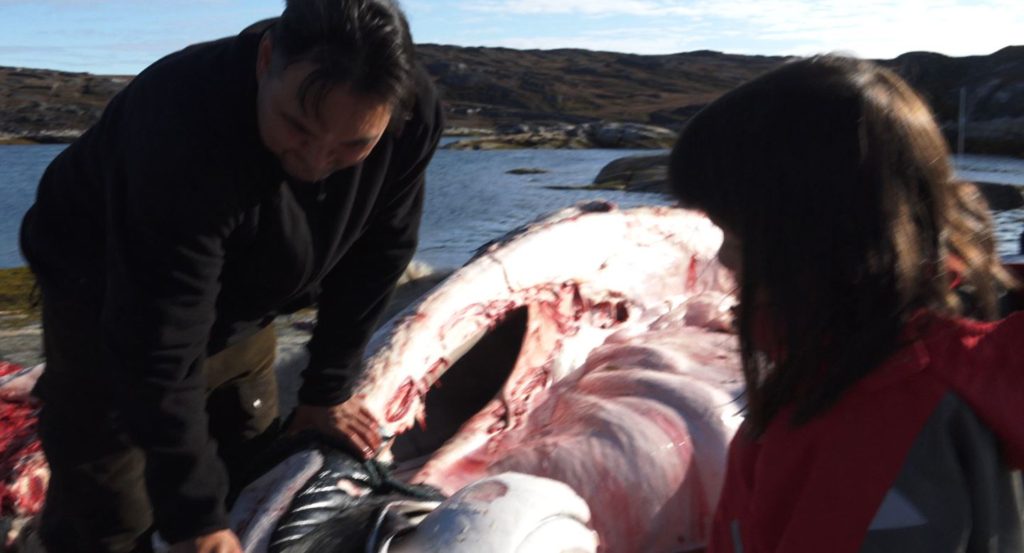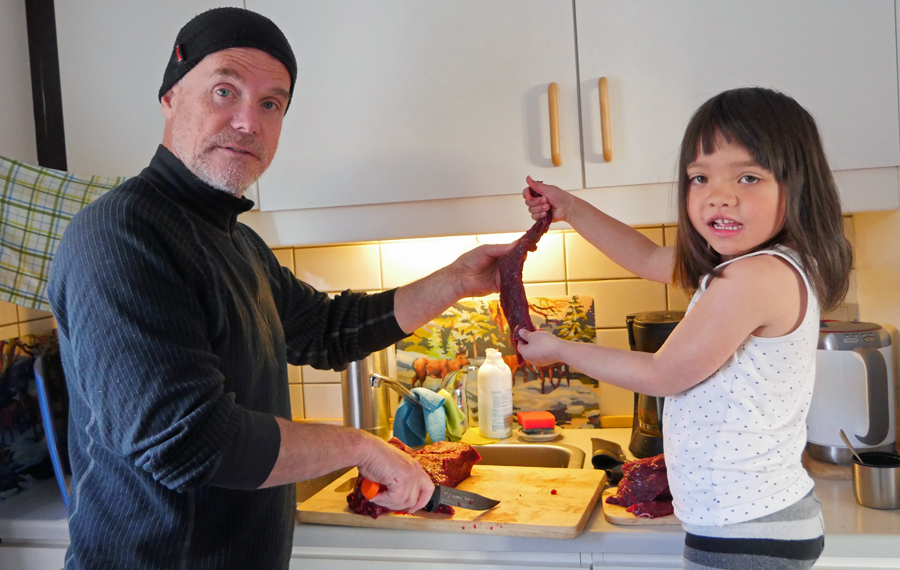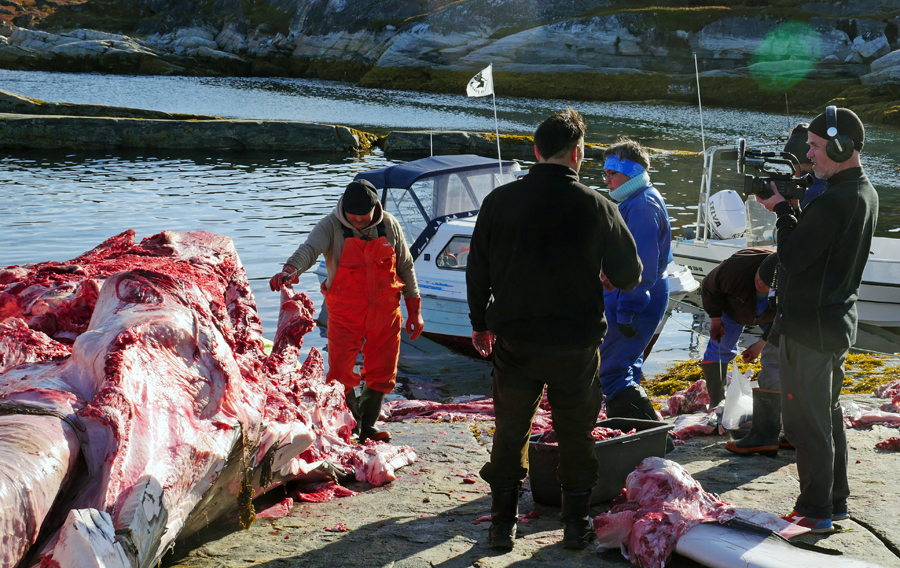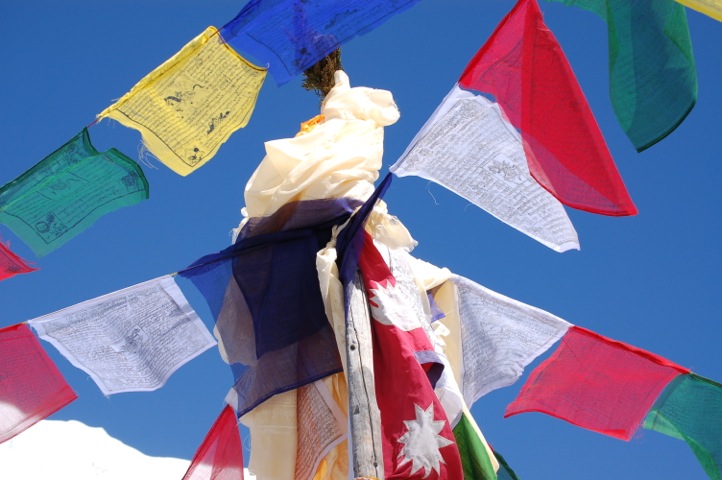(Swedish version first, followed by the English)
Snöyra utanför fönstret. Korparna seglar lugnt i stark termik. Två nätter har präglats av en vind som här i trakten kallas saqqarsarneq, som betyder solsidan. Alla fönster här har träjalusier som man spikar för när ingen bor här, men nu har vinden lekt med dem och de trummar nätterna genom. Jag skall gå ned och köpa spik i affären, så familjen får sova. Det här har varit ett bra test för både huset och familjen. Golvkallt. Halsont. DMI (Danska Meteorologiska Institutet) påstår att temperaturen just nu med vinden nedkylningseffekt är – 9 grader. Det kommer att bli en tuff vinter, men vi är redo.
”Har du hört att det skjutits en stor val? Jag kan ta er dit” , förklarade Anda på telefon: ”Hela vår ort har varit dit och hämtat kött, så mycket är det. Det här är jägare som kommit från Pamiut och harpunerat den från en stor båt som vi inte har här i samhället. Och de kan inte själva ta vara på allt kött innan det blir dåligt. Så det har bjudit in oss att hämta det vi vill ha.”
Klart jag sade ja och när Pam slutat sitt jobb, så åkte vi alla dit i Andas båt och passerade de mest fantastiska isberg under den guppiga vägen dit. Jag vet inte vad jag förväntade mig, jag har ju varit nära sydkapare längs patagoniens kuster, där jag blev förälskad i dem, och jag hade hört talas om att när en stor val skjutits så får hela bygden mat för att klara vinteruppehället. Och eftersom vi nu själva är del av ett sådant isolerat samhälle, så blandades glädjen av både att få se valen men även för att det betydde mat som skulle kunna göra livet mycket bättre under den kommande vintern. Men jag var osäker om det fortfarande gällde i det moderna Grönland. Jag hoppades det.
Plötsligt dök den upp valen. Det såg verkligen enorm ut där den låg, delad i tre delar, som en gigantisk köttbutik. Det var en del bybor där när vi anlände och Anda, en av de mest fantastiskt generösa och trevliga människor jag träffat, började direkt skära ut kött nära skallen åt oss, Dana smakade sin favoritmat direkt, mattack, den feta biten strax under huden. Platsen var sedan länge använd som slaktplats för val, här fanns vinschar och annat. En enormt valkranium sedan gammalt skräpade och när jag frågade Anda, vad det var för val, svarade han:
”Tikaagulliusaaq.”
Jag såg barderna, så jag misstänkte att det var en sillval, vilket det senare visade sig vara, och jag visste att de blir i regel runt 20 meter långa och väger 70 ton. De är dessutom skarpt fridlysta på det södra halvklotet, men enligt den internationella valkommissionen, IWC, så är stammen hälsosam längs den grönländska västkusten.
”Hjärtat är borta, det väger 150 kg och smakar bäst av allt” , berättade Anda, som skar av mattak åt Dana.
Jag vet att jag kommer att få massor av mejl från folk som är upprörda gällande valjakt, oavsett om verkligheten är sådan att det tillhör inuiter och grönländares kultur samt att utan valkött så skulle folk inte kunna överleva i obygderna, eller inte. Jag ber er också se filmen Angry Inuk för perspektiv gällande s.k urbefolkning och jakt och hur illa det kan gå . Så här är det ren överlevnad och mat för hela trakten månader framöver. Vi var oerhört glada över köttet. Valen var, trots att det bara var en del av den, både mäktig och vacker, och sillvalen är, trots sin snabbhet och världens näst största val efter blåvalen, nästan utrotningshotad, men det stora problemet är japanerna. Grönländarna får varje år en kvot, se här och här, (den officiella grönländska versionen) och gällande sillvalar så är det 14, men om det rapporteras att en sillval är skadad innan jakten, räknas inte denna och det anses som skyddsjakt. När valjägarna fått syn på en sillval, måste de få klartecken från regeringen i Nuuk för att få skjuta.
Tjejerna då? Ja, de har ju sett en hel del redan i sina korta liv, men valen imponerade. De kände ingen sorg över den döda valen utan mest spänning och glädje över både maten och upplevelsen, det beroende på naturligtvis på föräldrarnas inställning. Självklart är vi bägge för skyddande av vår världs flora och fauna, inklusive människan! För mig då som har levt större delen av mitt liv på landsbygd, så är dess bevarande extremt viktig för en levande sådan. Vi kan inte bara bo i städer, vi folk. Då glömmer vi av vilka vi är. Vi människor.
English version:
There´s a prevailing snow breeze outside my window. Ravens sail on the strong up winds. During two nights a local storm wind called saqqarsarneq, which means the sunny side, has plagued life here in the settlement. All our windows are covered by wooden shutters when there´s no people in the house, which it hasn´t for quite some time, at least during winter, but these are making such a noise all the time, so it is hard to sleep. That is how strong the wind is. However, locals says it is a breeze compared to the winter version. I am on my way down to the center and the local shop to be nails and nail the shutters to the wall until we leave. This breeze have been good for us and the house, to see how we both fare. It is damn called, especially the floors when the wind is on, we all have sore throats and according to DMI (the Danish Meteorological institute), the real temperature, wind take in account, -9 Celsius. There´s no doubt the winter will be tough, but we are ready. Both we and the house!
”Have you heard a big hale have been harpooned? I can take you there” , Anda explained over the phone: “Everyone is there getting a chunk of the meat because there´s such a big whale. It was harpooned by hunters from Pamiut from a big boat, we don´t have in the village. And they can´t take care of all the meat themselves before it goes bad, so they have invited us to share it and take what we need.”
Naturally I said yes to his offer. When Pam got off work, all of us got on Anda´s boat and travelled past some of the most stunning of icebergs before reaching the place of the whale. I didn´t really know what to expect, but I have been very close to southern right whales along the Patagonian coast where I fell in love with them and I had read that when a big whale is killed in Inuit territory in Canada and Greenland, it is shared among locals. Meat and food that will last for many months and makes life much easier in these isolated communities. And since we belong to one ourselves now, we saw the giant carcass of the whale and all the meat, as both exhilarating but also as food for the winter survival. I really hoped it was true, this sharing.
Suddenly the carcass of the whale in front of us. It was huge. It was split in three parts and came across as a giant butchers shop. There were a few locals there, getting their share, and Anda, one of the nicest and most generous people I have ever come across, cut out about 20 KG.s of meat for us immediately. Good meat, just next to the head, so almost fat free. Dana started to eat her favorite food immediately, mattak, the fattest part found just below the skin. The place in itself was an old place where the slaughter of whales had been for a long time, permanent winches and steel cables interspersed with giant whale skulls and when I asked Anda what kind of a whale this giant was, he answered in Greenlandic:
”Tikaagulliusaaq.”
I saw the baleen, so i realized it was most likely a finwhale, which it turns out it was, and I knew they were the second biggest whales on earth after their relative, the blue whale, and that they could reach 20 meteres and more in size and weighed 70 tonnes. On top of that, I also knew they belonged to the endangered species on earth, which are threatened with extinction. However, according to the International Whaling Comission, IWC, the West Greenlandic population is still healthy.
”The heart is already gone. It weighs 150 kg and tastes better than anything” , Anda claimed and cut off some more stripes of mattak for Dana to have during winter.
I already know I will receive emails and negative comments as regards to the killing of these amazing whales, even if reality here is a case of survival and part of the hunting culture of Inuits and Greenlanders. Please, do see the documentary Angry Inuk for perspective on this issue and how wrong well-being Westerners does cause aboriginal people. The reality is, right here were we are, the killing of a fin whale means food for months ahead and surviving winter much better than without it. We are very happy over having received this meat. But there´s no doubt, the fin whale, even if it was only a third of it left, it came across as beautiful and massive and it is one of the fastest, which saved it for hundreds of years until technology caught up and today it is endangered due to the Japanese. The Greenlanders are allotted a quota each year by the IWC, see this and this, (the official Greenlandic version) and as regards to fin whales the quota is 14 a year, but if reports surfaces that there´s an injured fin whale around, it is seen as protective hunting and therefore is not included in the quota. And, when the hunters spot fin whales, they have first to ask the government for permission to kill and hunt.
What about the reactions of the girls? Well, they have seen a lot of stuff throughout their short years, but the whale impressed them immensely. They didn´t feel any sorrow over the fact it had been killed and butchered, but saw it all with excitement and happiness both over the experience and the food. Obviously we parents and our opinions make a difference. And obviously we are for protecting the flora and fauna of our globe, including homo sapiens sapiens! For me, who have spent most of my life living in the countryside and back of beyond, preserving this way of life is extremely important. We can´t just have big cities and people living in them. If this happens, which might happen sooner than later in Greenland, we will forget who we ones were. We human beings.
